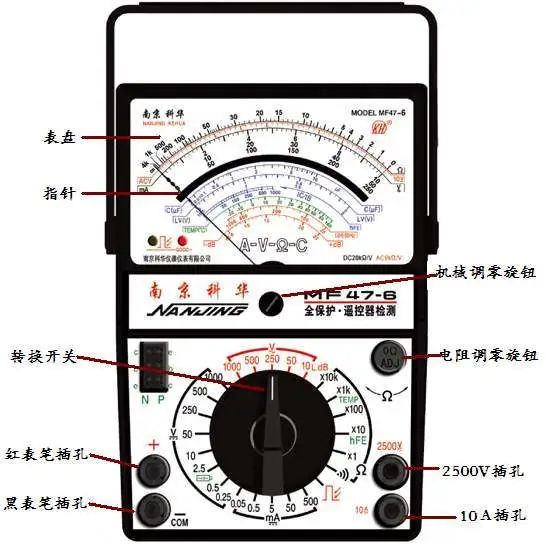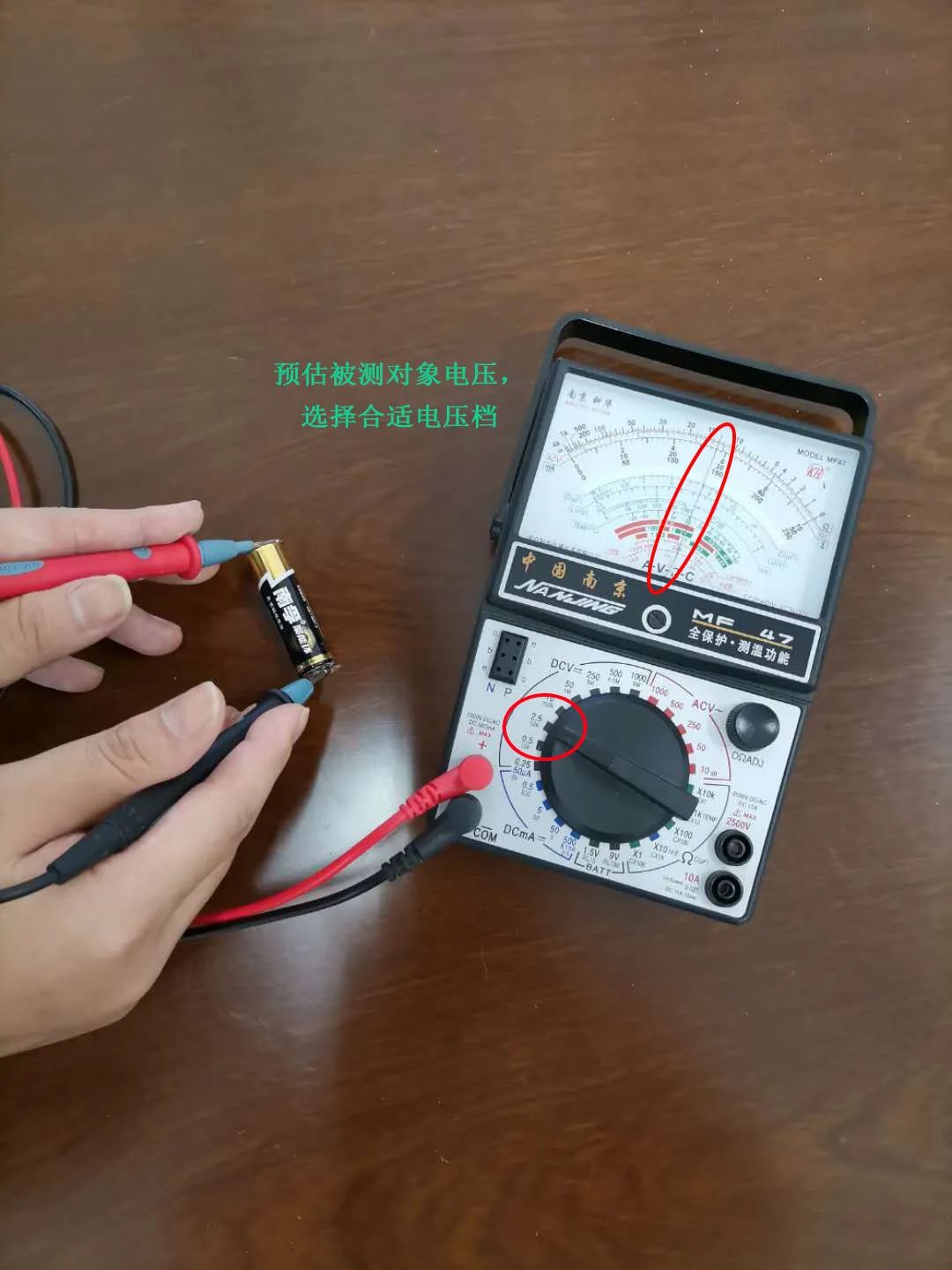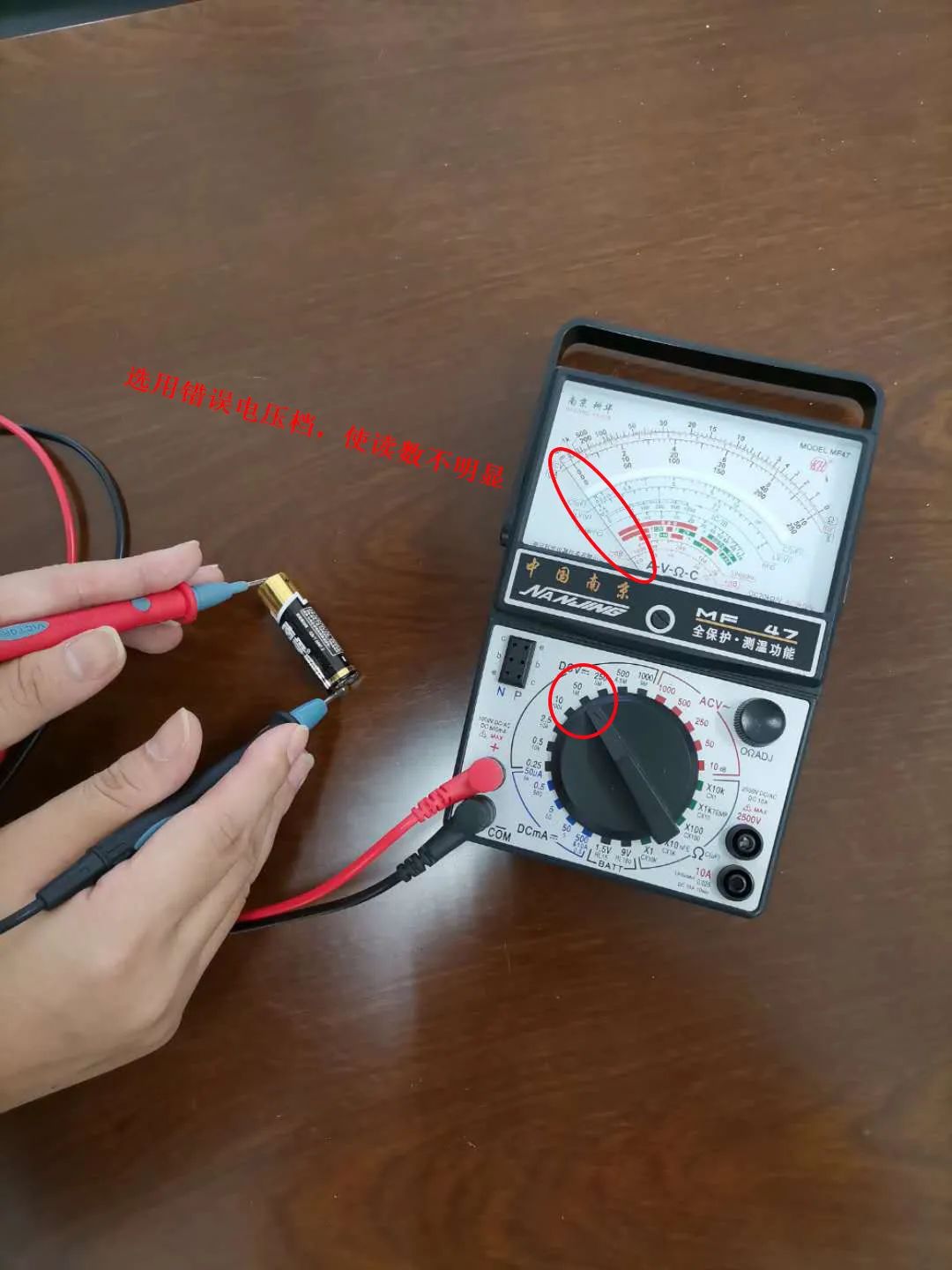Click the blue text above to follow us
Hello
Dear students
Our Dou Classroom is back ~
Welcome to this episode
So this is how to measure AC and DC voltage with a pointer multimeter!



If you can’t watch the video for now, don’t worry!
The complete wiring connection steps are right below
Want to know how to measure AC and DC with a pointer multimeter?
Just follow along with me~

1. Uses of the Pointer Multimeter

A pointer multimeter is a multifunctional and multi-range measuring instrument. Generally, a multimeter can measure DC current, DC voltage, AC current, AC voltage, resistance, and audio levels, and some can also measure capacitance, inductance, and certain parameters of semiconductors (like β).

2. Usage and Precautions

1. Preparation before Measurement:
(1) Before testing, first place the multimeter in a horizontal position and check whether the pointer is at zero (the zero point of the current and voltage scales). If not, adjust the “mechanical zero adjustment” below the meter head to make the pointer point to zero.
(2) According to the measured item, correctly select the measurement project and range switch on the multimeter.
If the magnitude of the measured quantity is known, select the corresponding range. If the magnitude is unknown, start measuring from the maximum range. When the pointer’s deflection angle is too small to read accurately, reduce the range. Generally, a deflection angle of at least 30% of the maximum scale is considered a reasonable range.

2. Measuring AC and DC Voltage:
(1) Connect the multimeter in parallel to the circuit being measured. When measuring DC voltage, pay attention to the polarity of the measurement point, connecting the red probe to the higher voltage side and the black probe to the lower voltage side. If the polarity is unknown, use a trial method; if the pointer deflects to the right, measurement can proceed; if it deflects to the left, switch the positions of the red and black probes before measuring.
(2) To minimize errors introduced by the internal resistance of the voltmeter, choose a large range when the pointer deflection angle is greater than or equal to 30% of the maximum scale. The larger the range, the larger the voltage divider resistance, and the smaller the equivalent internal resistance of the voltmeter, which reduces errors introduced to the measured circuit. If the internal resistance of the measured circuit is very large, the internal resistance of the voltmeter must be even larger to maintain measurement accuracy. At this time, use a multimeter with higher voltage sensitivity (greater internal resistance) for measurement.
(3) When measuring AC voltage, there is no need to consider the polarity issue; just connect the multimeter in parallel across the two points being measured. Additionally, it is generally unnecessary to select a large range or a multimeter with high voltage sensitivity, as the internal resistance of AC power sources is usually small. Note that the measured AC voltage must be a sine wave, with a frequency less than or equal to the allowable working frequency of the multimeter; otherwise, significant errors may occur.
(4) Do not switch the range selector while measuring high voltages (e.g., 220V) to avoid arcing, which could damage the contacts of the selector switch.
(5) When measuring high voltages greater than or equal to 100V, safety must be prioritized. It is best to first fix one probe to the common ground of the circuit being measured and then use the other probe to touch the other test point.
(6) When measuring voltage in circuits with inductive reactance, disconnect the multimeter before turning off the power. Otherwise, when the power is cut off, the self-induction phenomenon of inductive components in the circuit may generate high voltage, potentially damaging the multimeter.

3. Precautions:
(1) Do not mistakenly switch the range when measuring current and voltage. If you mistakenly use the resistance or current range to measure voltage, it can easily damage the multimeter. When not in use, it is best to set the range to the highest AC voltage to avoid damage from improper use.
(2) When measuring DC voltage and current, pay attention to the “+” and “-” polarities to avoid incorrect connections. If the pointer reverses, immediately switch the probes to avoid damaging the pointer and the meter head.
(3) If you do not know the magnitude of the voltage or current being measured, start with the highest range and then select an appropriate range for testing to avoid excessive pointer deflection that could damage the meter head. The closer the selected range is to the measured value, the more accurate the measurement will be.

This episode of Dou Classroom ends here!
Thank you all for your patience in watching~
See you next time, bye


Finally, let’s highlight
How to find us on Douyin
Friends, remember to
Search for our Douyin account and follow us
Every night
We are waiting for you in the vast sea of accounts ♡
1. In the Douyin [Search Bar]
Type in [The Unknown Gao Senior]
2. Open the Douyin APP on your phone
Scan the QR code below to follow us

On Douyin
We will bring more lively and interesting content
Share the joy of practical training
Let you see the 12 hours of Dongguan Training Center
A million years is too long
Just fight for 15 seconds of a short video~~~




Scan to Follow Us

